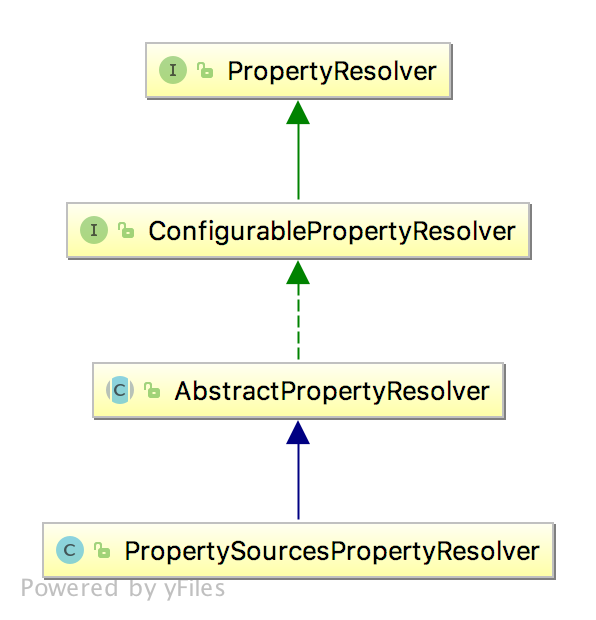PropertyResolver在Spring中的作用是负责属性解析,例如在XML中替换占位符(${})属性,@Value注解等
PropertyResolver

PropertySource & PropertySources
在介绍PropertyResolver之前,先介绍下PropertySource和PropertySources。PropertySource可以看做是包含了name/value的对象,而PropertySources则是由多个PropertySource组成的对象
PropertySource
1 | public abstract class PropertySource<T> { |
PropertySources
1 | public interface PropertySources extends Iterable<PropertySource<?>> { |
MutablePropertySources是PropertySources的默认实现,保存了List<PropertySource<?>>(虽然是list但是实际上通过PropertySources.name保证了每个PropertySources唯一性),并且还添加了添加/删除等方法,例如addFirst(PropertySource<?> propertySource),remove(String name)等
PropertySourcesPropertyResolver
PropertySourcesPropertyResolver做的事,就是循环PropertySources,根据属性名称从PropertySource中获取属性值,并且对属性值做占位符解析替换
写个例子:
1 | public static void main(String[] args) { |
getProperty()方法实现
1 | // PropertySourcesPropertyResolver.java |
resolveNestedPlaceholders()调用的是AbstractPropertyResolver.resolveNestedPlaceholders():
1 | // AbstractPropertyResolver.java部分代码 |
可以看出,占位符处理工作是在PropertyPlaceholderHelper.replacePlaceholders()中实现:
1 | // PropertyPlaceholderHelper.java |
1.循环依赖
2
3
4
mapProperties.put("abc", "${def}");
// 或者如下形式
mapProperties.put("a", "${a}"); // IllegalArgumentException
2.占位符递归
2
3
4
mapProperties.put("b", "b");
mapProperties.put("ab", "${a}");
mapProperties.put("abc", "${a${b}}"); // getProperty("abc") -> 最终输出`a`
3.分隔符使用